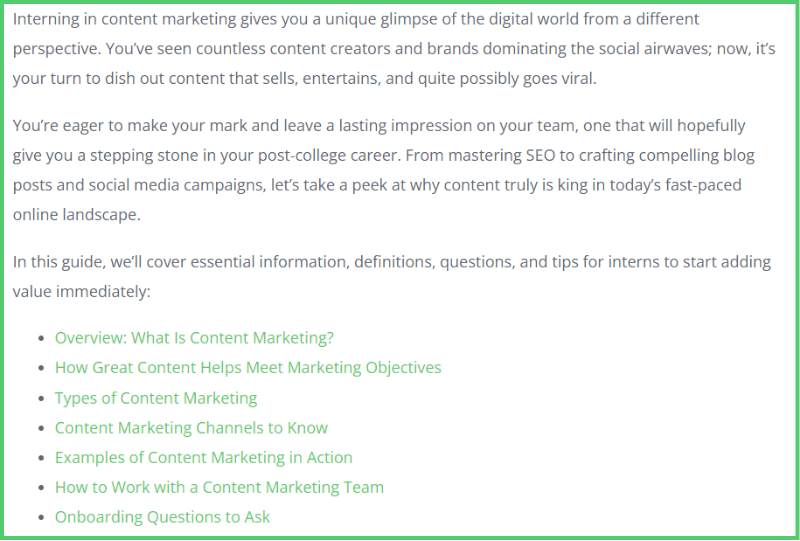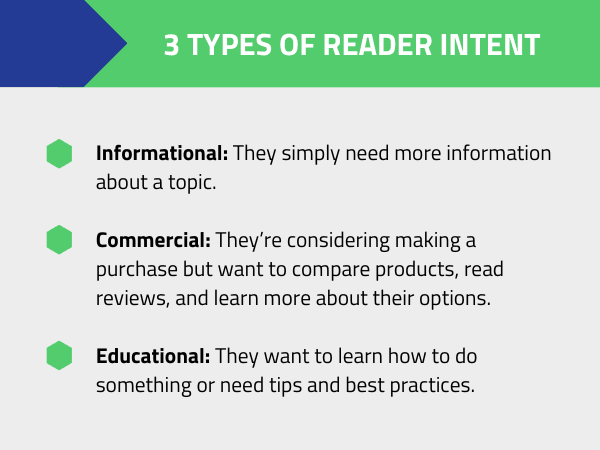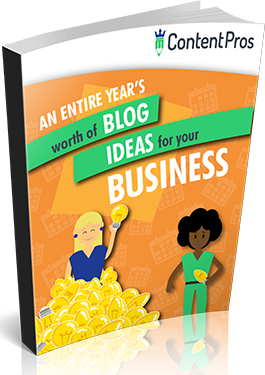The best blog post—is one that gets read. With businesses writing more than 7.5 million blog articles per day, it’s no surprise that many of them don’t get the traction they deserve. And until your audience reads your blog, it can’t serve its intended purpose. So, how do you write a good blog that gets results?
Let’s explore the basic building blocks of what makes a great blog post that will support your business goals.
How to Write a Good Blog Title
The title is the first thing your readers see, and it’s the make-it-or-break-it piece that determines whether they click to read. That’s why a great blog title’s value cannot be overstated.

In general, good blog titles share four key elements:
- They’re short and to the point
- They’re honest about the content they represent
- They make a strong impression
- They evoke curiosity
Let’s break these down further.
Good Blog Titles are Succinct
Save the narrative for the blog content; your title should be no longer than a few words. Ideally, your blog title will be no more than 60 characters, since Google may cut off longer titles.
You also want to grab your reader’s attention right away. It’s harder to do this with long titles, since it takes the reader longer to process them.
That said, you also don’t want to give too little information in the title. Your title should be long enough to set expectations, yet short enough to read in 1-2 seconds and feel compelling enough to click.
Good Blog Titles are Honest
Be honest about what your blog article will tell them to ensure they won’t be disappointed if they invest time in reading it. There’s no need to overhype your blog title, as this can lead to a high bounce rate and ultimately reflect poorly on you if you fail to meet their expectations.
Clickbait titles work well for certain publications, but for professionals and businesses, remember your reputation is on the line.
Good Blog Titles Make a Strong Impression
Your blog title is an opportunity to make your content stand out, especially if you’re writing on a topic others have already covered. This is your chance to differentiate your content at the onset and leave a lasting impression.
Dare to be different while also remaining honest about what you have to share.
Good Blog Titles Evoke Curiosity
While you should avoid overly hyped clickbait titles, there’s nothing wrong with adding a little mystery. You can do this cleanly and honestly by adding numbers (for a listicle article) or using strong action verbs instead of passive terms.
Examples of Good Blog Titles
With these tips in mind, let’s look at some examples of great blog titles and why they work:
Example: 7 Surprising Ways Exercise Can Impact Your Well-Being
The word “surprising” adds intrigue, while the number 7 sets clear expectations about what the reader will find inside the blog.
Example: The Art of Mindful Eating: How to Enjoy Healthy Meals
Starting with “The Art of” indicates refinement and practices that the average person might not have considered, which pulls the reader in.
Example: Unleashing Creativity: How One Professional Author Overcomes Writer’s Block
While this title runs a little long (75 characters), it does a good job of being to the point, honest, unique, and inspiring.
Bonus: Include your primary keyword in your blog title for an extra SEO boost.
How to Write a Good Blog Introduction
Your blog introduction should maintain the same momentum as your title. You want to pull the reader into your content and encourage them to keep reading.
Here are some ways you can do this in three paragraphs or less:
- Start with a hook, such as a surprising fact or statistic, a thought-provoking question, or a compelling anecdote.
- Include the primary keyword somewhere in the first paragraph to connect your blog’s relevance to the user’s search.
- Keep it short and give a brief overview of what the article is about—no need to go into great detail here.
- Make it clear who you’re speaking to.
Here’s an example of a good blog introduction from our blog post on The Ultimate Content Marketing Onboarding Guide for Interns:

Here, we’re writing for a specific audience: interns working in content marketing. We used a relevant keyword in the first paragraph, “interning in content marketing.” And since this blog post covers many topics, we included a clickable Table of Contents for better usability and to give an outline of the blog article.
Treat your introduction as an opportunity to “sell” the reader. Show why the blog is worth their time and be specific about what they stand to gain.
How to Structure Your Blog
After the introduction, your blog content should flow logically and naturally. You want your audience to keep reading as long as possible, so your job is to anticipate the order in which the information will make the most sense to them.
Ultimately, the structure depends on the blog topic. The five most common blog structures include:
- Inverted Pyramid: Cover the broad key takeaways first, followed by the narrower details. This is how most news stories and press releases are written.
- Listicle: Use a list to cover the main components in the body of the article.
- Descriptive: Detail the features and benefits of your product or service to demonstrate its capabilities and use cases.
- Why, how, what: Inform and inspire the reader to take action.
- What is, what could be: Remind the reader of the status quo followed by the path to a better way.
Once you’ve selected the structure best suited to your topic, follow these best practices to help you organize your information into a compelling narrative:
- Separate each idea into subsections under H2 headings, just as we’ve done in this article. We created different sections for writing a good blog title, introduction, structure, and reader intent.
- Break up long sections into smaller sections using H3 headings. Ideally, each section under a heading will be no longer than 200-250 words.
- Let the information build on itself. Starting with the most fundamental knowledge, dive deeper as you move through the article.
- Read other blogs on your chosen topic and search for what’s missing—this is how you make your blog article better than what’s already been published.
- Use bullet points, bold font, and lists to organize information and make key points stand out.
- End with a clear conclusion that summarizes the blog post, leaves some food for thought, and tells the reader what to do next.
A strong structure helps your reader move from one idea to the next with ease and gives your ideas staying power. Your reader is more likely to take something away from the blog when it’s well organized.
How to Align Your Blog with Reader Intent
Your readers trust your blog to tell them something they don’t know. There’s a reason they’re seeking this information, and for businesses, it usually falls into one of these categories:
- Informational: They simply need more information about a topic.
- Commercial: They’re considering making a purchase but want to compare products, read reviews, and learn more about their options.
- Educational: They want to learn how to do something or need tips and best practices about a certain topic.
This is what we call “reader intent.” It’s similar to search intent when talking about SEO, but these intentions are more specific to writing people-first blog content. Once your reader clicks on your article, they expect it to live up to the headline. You can ensure this happens when you anticipate the reader’s intentions—the reason why they clicked.

Let’s look at some examples.
Informational Intent
Informational blogs (also called value blogs or top-of-the-funnel blogs) serve to tell your audience something they didn’t know before. It might answer a specific question, introduce a new idea, or talk about a topic related to your business.
Take our blog article on the Current State of Content Marketing 2024, for example. Here we share our findings and expert insights on content marketing, including how it’s changed, its effectiveness, and our predictions for the industry.
The goal of informational blogs is to provide value to the reader. You want to leave them with a good impression of your brand or business, even if they don’t buy something from you or take any other action. In a perfect world, they’ll remember you as a reputable source and will connect with you in the future.
Commercial Intent
Commercial intent (also called middle of the funnel) is for prospects who are almost ready to make a decision, but need more information first. They’re aware of a problem they want to solve and now want to explore their options. They want to compare brands, read reviews, and learn about features, benefits, and costs.
Using another Content Pros blog as an example, take a look at Content Writing Agency vs. AI. Many of our clients and prospects know they need expert content, but want to consider all possible options for crafting high-quality writing. This blog post helps them compare options, check the boxes, and make an informed decision.
Educational Intent
Similar to informational content, educational content informs, but with more of a teaching angle. These are how-to guides, best practices, tip sheets, and similar content that help to build the reader’s skills and practical knowledge.
Our blog, How to Do a Content Audit in 5 Steps, is a prime example. After reading this article, our audience will be able to do their own content audit. This type of content can fall anywhere in the marketing funnel.
The key takeaway here is that reader intent should help to inform your content. Think about your topic and what the reader wants to know, then deliver on those expectations.
How to Make a Blog Post Look Good
Last but not least, the way your blog looks shouldn’t be an afterthought. A good-looking blog makes your audience more likely to read it and share it. Otherwise, all the work you put into writing won’t be as effective as it could be.

To make your blog stand out, consider adding the following:
- Images, graphics, or infographics related to your content
- Embedded videos that further explain a process or idea
- Lists
- Quotes and callouts
- CTA boxes
- Charts, tables, and graphs
These visuals bring your content to life and break up long blocks of text, making it easier to read and absorb your content.
In addition, you can add instant appeal by choosing short paragraphs instead of long walls of text. Use headings to break up the content into clear and logical sections. The goal isn’t just to add “eye candy” to your blog, but also to encourage your audience to keep reading.
Writing Good Blog Articles Consistently
Anyone can write a blog, but it takes skill, expertise, and a commitment to quality to write great blog posts consistently. That’s why we created Content Pros, an agency of experts dedicated to helping your business succeed with written content. To see examples of great blog posts, read samples of our work for your industry.

